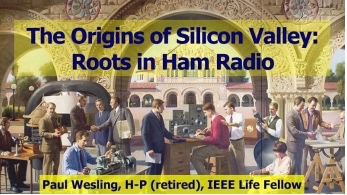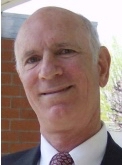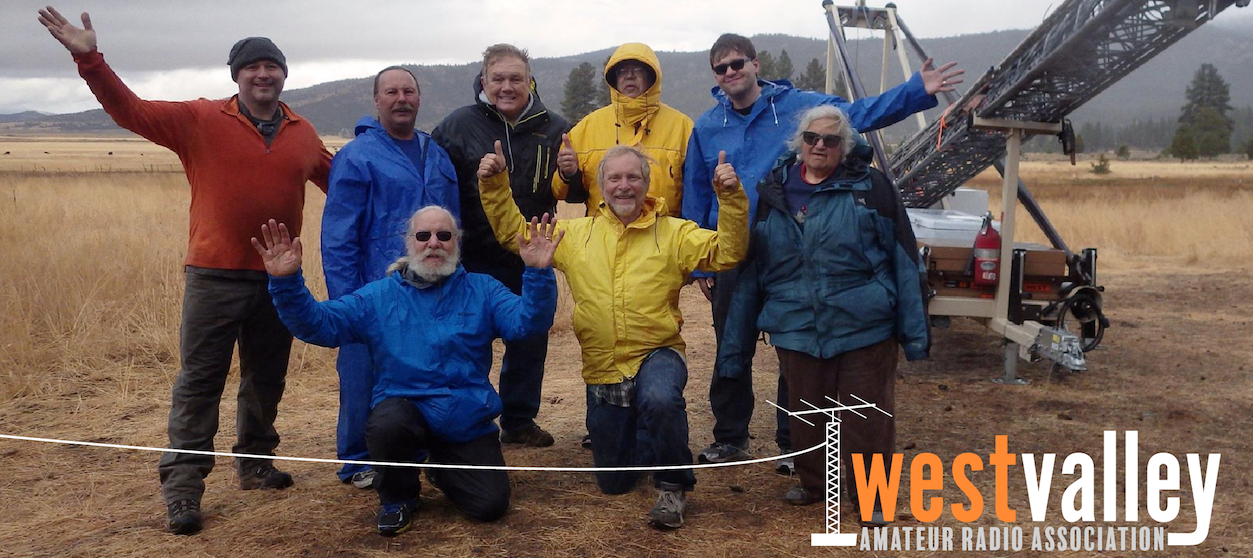Our next WVARA meeting will be held in-person at 7pm on Wednesday, March 8, in Meeting Room 3 at the Silicon Valley Chapter of the American Red Cross, 2731 N. First Street at Plumeria Drive (southwest corner) in San Jose. If you haven’t been to the Red Cross in a while, “talk-in” is usually available on the Association’s repeaters. Best choice would be 2m/220.

Social time for this month’s meeting will begin around 6:45pm, with this month’s presentation beginning at 7pm. This month’s presenter is Paul Wesling, KM6LH, who will be speaking about amateur radio’s dramatic impact on the beginnings of the Silicon Valley. Why did Silicon Valley come into being? The story goes back to local Hams (amateur radio operators) trying to break RCA’s tube patents, “angel” investors, the sinking of the Titanic, Fred Terman and Stanford University, local invention of high‐power tubes, WW II and radar, William Shockley’s mother living in Palo Alto, and the SF Bay Area infrastructure that developed – these factors pretty much determined that the semiconductor and IC industries would be located in California’s Santa Clara Valley, and that the Valley would remain the world’s innovation center as new technologies emerged – computers, then software, mobile, biotech, Big Data, VR/AR, autonomous vehicles and now blockchain – and it would become the model for innovation worldwide. This presentation gives an exciting and colorful history of device technology development and innovation that began in Palo Alto, then spread across the Santa Clara Valley during and following World War II. You’ll meet some of the colorful characters – Cyril Elwell, Leonard Fuller, Lee de Forest, Bill Eitel W6UF, Charles Litton 6AO, Fred Terman 6AE/W6DI, David Packard 9DRV, Bill Hewlett, Russ Varian and others – extending to Nolan Bushnell W7DUK and Steve Wozniak WA6BND – who came to define the worldwide electronics industries through their inventions and process development.

Paul is an IEEE Life Fellow and Distinguished Lecturer and has observed the Valley for decades as an engineer, executive, resident, and educator. He received degrees in electrical engineering and materials science from Stanford University, then worked locally at companies including Lenkurt Electric, Sperry‐ Univac, and Amdahl, joining Tandem Computers in Cupertino in 1985. Paul retired from HP in 2001, then served as “Mr. IEEE” for the San Francisco Bay Area for 10 years. He is a Life Fellow of the IEEE. He received the IEEE’s Centennial Medal, the Board’s Distinguished Service award, the Society Contribution Award, the IEEE’s Third Millennium Medal, and the EPS Society’s Presidential Recognition Award. He edits the IEEE/ASME/SEMI Heterogeneous Integration Roadmap for prediction of technology directions in electronics packaging.
BTW, several of us meet for dinner prior to the meeting at 5:45pm nearby at Disn-N-Dash (2551 N. 1st St. San Jose): https://dishdash.com Feel free to join us for dinner.
Although we will be meeting in person, Paul’s presentation will also be streamed via Zoom. Zoom instructions will be sent via WVARA reflector and can likewise be obtained by contacting K6EI — his email is available via QRZ.
Three things to remember:
- Since the west side entrance to the Red Cross Building is always locked, we recommend entering the Red Cross Building through the main entrance situated on the north side of the building.
- The Red Cross locks the main entrance at 7pm sharp, so please come a few minutes early in order to get access to the building.
- We will be in Meeting Room 3 — about 100 feet from any entrance. As a result, late comers who knock on an outside door won’t be heard from our meeting room. If you are late and need access, you can call my cellphone (408 636-6172) and someone will come let you in. But please try to arrive before 7pm to avoid this hassle.
– Jim, K6EI
